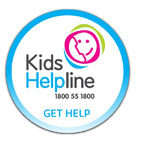Internet Safety: Parents
P2P File SharingFile sharing
File sharing is the sharing of digital information like computer programs, audio or video files, documents or electronic books with others across the internet. The most commonly shared files are pirated music, movies and computer software. Most file sharing is conducted over the internet using peer-to-peer (P2P) networks.
P2P is an application that runs on a personal computer and shares files, such as music files, with other users across the internet. P2P networks work by connecting individual computers together directly to share files instead of having to go through a central server. P2P networking is popular with children as the software is usually free, easy to install and gives access to many files that would otherwise be too difficult or too expensive to obtain. Some file-sharing software enables people to chat online while they share.
Is file sharing safe?
File sharing can be safe if legal services and appropriate e-security measures are used.
P2P file sharing enables users some access to each other’s systems. The level of access will vary depending on the user’s knowledge and use, of appropriate security settings. Less savvy users may unintentionally provide access to all their computer system, not just the music or movie files they are sharing.
Some files in P2P networks have misleading labels to hide the true nature of the content. This means that children might download something that appears innocent, only to find it is inappropriate for them. P2P networks may also be used to distribute child sexual abuse materials or to attempt to make contact with children. Parents should be especially wary of software that enables children to chat with other people sharing files.
Video sharing
Video sharing websites enable users to share personal videos. YouTube is a popular example of a video sharing website.
The video link provides information about how to help children manage the risk associated with video sharing websites.
Photo sharing
In its simplest form, photo sharing includes emailing a few photos to friends. A more advanced type of sharing is publishing images on photo-sharing sites such as Flickr or Instagram.
Digital photos can be uploaded direct from a digital camera or mobile phone. Older photographs can be scanned from physical prints and then uploaded for others to see.
Some sites allow direct uploading from a computer’s photographic software or web browser, although others require users to use their own software application.
People use photo sharing websites to share photography as a creative outlet, or as a way of letting their friends see the latest family pictures. Many people use photo sharing to advertise their photographic skills in the hope of obtaining employment.
Many photo-sharing sites are free, and appear alongside advertisements. If users pay for a photo sharing service, their photos will usually appear free of advertisements. When choosing a photo-sharing service, check to see if there are limits on the number of uploads and downloads, what privacy controls are in place and the cost of subscribing to an advertisement free service. Users also should check the terms of service and ensure that they retain all rights to the images that they upload.
Assigning copyright to photos is worthwhile, as it is possible for other people to take the images and use them for advertising or other purposes.
Users can choose who has access to their photos once they’re uploaded. They can be publicly available or just available to a chosen list of contacts. Consider keeping personal photographs private, shared only with close friends and family.
Downloading files, music and videos
Downloading is the process of saving a file from the internet onto a computer. The most common way to download is to click on a link that will begin the download automatically. A dialogue box will appear prompting the user to choose a computer location to save the file. Selecting save will begin the process.
Downloading is an increasingly popular activity on the internet and for many people, downloading music and video is the main attraction of using the internet. Many students download documents, like fact sheets, for school assignments as well as music and movies.
Legal downloading
There are many legal sources offering music, movies and other information for download. Some are free while others have a fee per service or an ongoing subscription fee. One issue to consider may be potential download limits within your internet contract. It is important before downloading to check your internet download limit, current download level and how much any excess charges will be. Many illegal download websites also carry the risk of viruses. Ask friends or family about reliable and legal websites for downloading.
Where do I go for help?
Cybersmart Outreach internet safety awareness presentations
Cybersmart Outreach offers free Internet Safety Awareness presentations for parents, students and teachers. These sessions are informative, non-technical and available to all schools. Ask your child’s school if they have registered to host a parent presentation.





